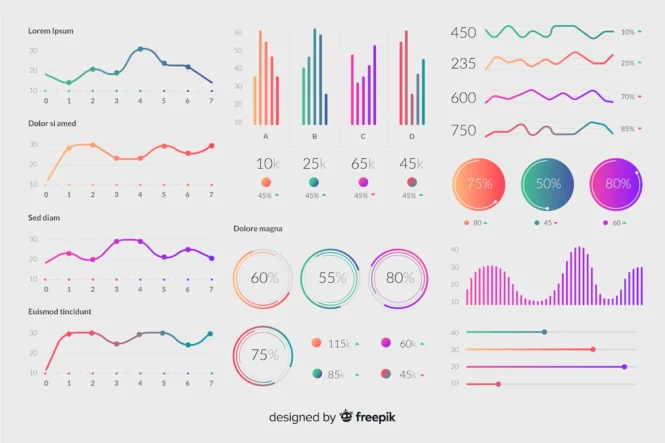Parameters and statistics are two of the most important concepts in data science. They both play an important role in understanding how data works, and they’re both essential for making informed decisions.
The main distinction between a parameter and a statistic is that a parameter describes an entire population, while a statistic describes a sample of a given population. Areas such as machine learning and statistical learning use statistics because a parameter is often impossible to acquire. Machine learning and statistical learning are both subsets of artificial intelligence.
What Is the Difference Between a Statistic and a Parameter?

Parameters are the individual values of a statistic that make it meaningful. Parameters can be thought of as the input to a statistical model. For example, the mean, median, and standard deviation are all parameters in a normal distribution. The size of a population is also a parameter. Population size can be thought of as the number of observations in a dataset.
A parameter is a conclusive measurement of the entire population. However, statistics is an extensive examination of a sample. Statistics give an average value, while a parameter provides a fixed, definite number. Statistics are generally easier to measure compared to parameters.
Statistical methods include sample sizes, statistical tests, and confidence intervals. Sample sizes are important when it comes to drawing conclusions from data because they determine how representative the sample is of the population. Different statistical tests can be used to assess whether there is a difference between groups of data, and confidence intervals can be used to provide a range within which a parameter could fall.
σ2 symbolizes parameter variance, while s2 symbolizes the sample variance. A lower cap ‘n’ is used to symbolize a sample, while a capital ‘N’ is used to symbolize the size of a population. μ(mu) symbolizes a population’s parameter average, while x represents the statistics mean.
A statistic will always vary depending on the sample taken, while a parameter is always a fixed number. Statistic collection is usually cheaper than a parameter survey. A sample can include a tiny portion of the population and be viable, while a parameter will require collecting all the population data.
What Is a Parameter?

A parameter is a number containing the summary of a population. The number includes complete information for the population group of interest. A parameter is often unknown since it is hard to quantify.
Parameter Examples
Example number one of a parameter would be the number of black dogs in Africa.’ Black dogs’ is our population of interest, and a parameter would be the exact number of black dogs in Africa. In this example, it would be impossible to count all the black dogs in Africa, making such a parameter an unknown figure.
Example two is 50% of the senators in the United States of America are republicans. 50% is the parameter. It gives the exact number of senators who are republicans. A parameter is an exact number that does not change.
What Is a Statistic?

A statistic is a number containing a summary of a small portion of a population. Statistical data is gathered from a sample of an enormous population. Statics is commonly used as it is easier to acquire information from a small portion of a group compared to collecting data from an entire population of interest.
Statistic Examples
Example one; 30% of Americans prefer tea. It would be impossible for you to locate and ask each American if they like tea. However, you can question a small group of about 100 Americans and, based on your sample findings, conclude that 30% of Americans like tea.
Example two;60% of students have fallen asleep in class at one point during their study. It is impossible to question every student and determine who has fallen asleep during class. However, by sampling a selected number of students, you can conclude on average, 60% of students fall asleep when a class is in process.
A statistic is not an exact number and may vary depending on the sample.
Sample Versus Population

A sample is a small part of the population that is used in the collection of a statistic. It is usually used when it would be hard or impossible to collect information on all the population of interest.
For example, it would be impossible to know the complete % of homes experiencing domestic violence in the U.S.A., requiring you to sample a few homes to get a rough estimate.
A population is an entire group that you have an interest in examining. An example would be the number of employees in a company. A population would include each employee in that company.
Generally, collecting information on the entire population is impossible unless the population has a small number.
Similarities Between a Statistic and Parameter

Both statistics and parameters contain data on the population. With both, you can calculate the central figures of the population, which include;
• Mean
• Medium
• Mode
Mean
It is the average value of a certain quality in a population. It is calculated by dividing the sum of all the values by the total number of the values. An example includes; the mean age of the senators being x divided by y, with x symbolizing the sum of all the senators’ ages and y symbolizing the number of senators.
Medium
This figure is obtained by arranging the values from the lowest to the highest. The medium is usually the number in the middle of the sequence if the sequence is an odd number. When a sequence is an even number, the mean is obtained by adding the two middle numbers and dividing them by two.
For example, if a mother had children aged 10,11, and 12, the medium age would be 11.
Mode
This figure is usually the most repeated in a population. For example, in a lecture hall with 100 students, if 30 are 17 years old, 45 are 18, and 25 are 19 years old, the mode would be 18 years.
 Imagup General Magazine 2024
Imagup General Magazine 2024



